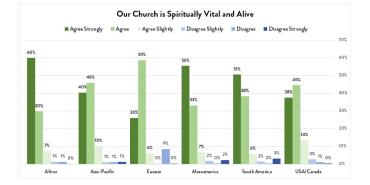The Matrix of Care

Many years ago, the Church of the Nazarene had an advertising campaign titled, "Our church can be your home."
It was a catchy phrase and as a pastor during that time, I welcomed it as a useful tool with which to adorn Sunday worship bulletins, midweek newsletters, church stationery, and so on.
Looking back, I guess we were a bit presumptive. We presumed that people in our communities were looking for a church to call their spiritual home or faith community. We also presumed that home was the proper metaphor to use in a descriptive phrase designed to connect with spiritual interest and even longing.
Since those days, much has happened to cause us to smile at that simple phrase. We are learning this new generation is not looking so much for an institutional spiritual home, but rather they are looking for a connection with real people experiencing and sharing life together. They may or may not notice the denominational connector, the Church of the Nazarene. Indeed, they might not even be looking for a grand, religious-looking edifice. They may be wondering who they will find, how they will be treated, and what are the points of connection within the fellowship.
In a word, they are searching for the authentic, not necessarily the trendy or the conventional, approach to doing church.
What truly lies at the heart of missional theology is a passionate commitment to caring. Frequently we hear the old phrase, "People don't care how much you know, until they know how much you care!" The powerful argument often fails, where the inconspicuous act of caring wins the day.
The church that is truly a place where people genuinely care for each other will seldom find itself without people with whom to share the joys of grace. Out of this matrix of caring emerges a hint of the body of Christ, clothed with the flesh and blood of real people. This matrix is driven by values, convictions, and commitment. Here, words like compassion, listening, sharing, caring, engagement, involvement, intercession, and nurture form a vocabulary that describes a powerful new narrative by which the 21st century church lives.
This is a place where people care deeply—where the evidence of God's love is apparent in the attitudes and actions of everyone.
Imagine attending a church where everyone cares for each other genuinely. Imagine the fertile, productive soil of such an environment, where the slightest degree of faith and obedience could blossom into a veritable garden of grace! If we could publish a listing of such churches, complete with addresses and worship and ministry schedules, our e-mail inboxes would be overflowing. After all, that's the church we'd all like to attend.
The good news is, every church can become a place where we truly take care of each other. The matrix of compassion is discernible by reading the story of Jesus and His earthly ministry in the Gospels. The key words are there, just waiting for our appropriation.
Your church may not need a better argument--it just may need to learn to care again!
David J. Felter
Holiness Today, July/August 2008
Please note: This article was originally published in 2008. All facts, figures, and titles were accurate to the best of our knowledge at that time but may have since changed.




